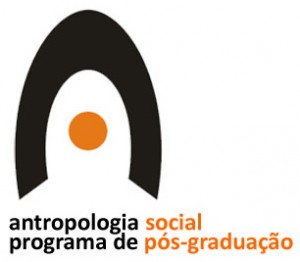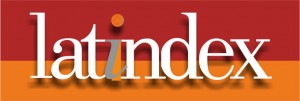Antropologia e etologia
uma abordagem conceitual
DOI:
https://doi.org/10.52426/rau.v5i1.138Palavras-chave:
antropologia, etologia, sociedades animais, emoções, cognição, inferência, ritos de interaçãoResumo
O presente artigo visa a revisar conceitos antropológicos aptos a ser aplicados a outras sociedades que não as nossas: as sociedades animais. Inscreve-se em um conjunto de pesquisas visando a questionar a função dos afetos como alicerce das sociedades e das culturas. Ou seja, trata-se de uma abordagem infracultural: consideramos a existência das culturas animais como fato estabelecido. O método e o quadro conceptual são os da antropologia, diferindo apenas no objeto, o animal, geralmente desprezado pelas ciências humanas. Propomos examinar três abordagens antropológicas suscetíveis de ser aplicadas aos animais sociais. Essas abordagens são respectivamente inspiradas de Mauss e Durkheim (sistemas de classificação), Goffman (ritos de interação), e da observação de casos clínicos extremos sob o prisma da psicologia cognitiva de Damasio e outros. Exemplos concretos, tirados da literatura etológica ou de minha própria experiência, serão utilizados com a finalidade de sugerir o potencial hermenêutico de tais conceitos e abordagens.
Referências
ALLEN, Colin; BEKOFF, Marc. 1999. Species of mind: the philosophy and biology of cognitive ethology. Cambridge: MIT Press.
ANDERSON, David J.; ADOLPHS, Ralph. 2014. “A framework for studying emotions across species”. Cell, 157(1):187-200.
ANDERSON, James R. 2000. “Primates and representations of self ”. In: J. Fagot (ed.), Picture perception in animals. Hove: Psychology Press. pp. 373-396.
ARAÚJO, Eduardo F. 2007. “A teoria da Umwelt de Jakob von Uexküll: apresentação”. Galáxia, 4(7):13-17.
BARATAY, Eric. 2003. Et l’homme créa l’animal: histoire d’une condition. Paris: Odile Jacob.
______. 2012. “Pour une histoire éthologique et une éthologie historique”. Etudes Rurales, 189(1):91-106.
BATES, Lucy A.; BYRNE, Richard W. 2007. “Creative or created: using anecdotes to investigate animal cognition”. Methods 42:12-21
BEKOFF, Marc. 2000a. Animal emotions: exploring passionate natures: we are not alone. BioScience, 50(10):861-870.
______. (ed.). 2000b. The smile of a dolphin. New York: Discovery Books.
______. 2007. The emotional lives of animals: a leading scientist explores animal joy, sorrow, and empathy-and why they matter. Novato: New World Library.
BEKOFF, Marc; PIERCE, Jessica. 2009. Wild justice: the moral lives of animals. Chicago: University of Chicago Press.
BLOOMFIELD, Laurie L.; PHILLMORE, Leslie S.; WEISMAN, Ronald G.; STURDY, Christopher B. 2005. “Note types and coding in parid vocalizations. III: the chick-a-dee call of the Carolina chickadee (Poecile carolinensis)”. Canadian Journal of Zoology, 83(6):820-833.
BOISSY Alain; AUBERT Arnaud; DÉSIRÉ Lara; GREIVELDINGER Lucile; DELVAL Eric; VEISSIER Isabelle. 2011. “Cognitive sciences to relate ear postures to emotions in sheep”. Animal Welfare, 20:47-56.
BOISSY Alain; PHAM-DELEGUE, Minh-Hà; BAUDOIN, Claude. 2009. Ethologie appliquée: comportements animaux et humains, questions de société. Versailles: Editions Quae. pp. 67-78.
BOISSY, Alain; MANTEUFFEL, Gerhard; JENSEN, Margit B.; MOE, Randi O.; SPRUIJT, Berry; KEELING, Linda J.; WINCKLER, Christoph; FORKMAN, Björn; DIMITROV, Ivan; LANGBEIN, Jan; BAKKEN, Morten; VEISSIER, Isabelle; AUBERT, A Arnaud. 2007. “Assessment of positive emotions in animals to improve their welfare”. Physiology & Behavior, 92(3):375-397.
BOVET, Dalila. 2012. “Peut-on étudier la morale chez les animaux?” Etudes Rurales, 189:57-73.
BRADSHAW, John W.; CASEY, Rachel A.; BROWN, Sarah L. 2012. The behaviour of the domestic cat. Boston: Cabi.
BURGAT, Florence. 1996. Animal, mon prochain. Paris: Odile Jacob.
BURGHARDT, Gordon M. 2005. The genesis of animal play: testing the limits. Cambridge: Mit Press.
BYERS, John A. 1998. Animal play: evolutionary, comparative and ecological perspectives. Cambridge: Cambridge University Press.
CURTISS, Susan. 1977. Genie. New York: John Wiley & Sons.
DAMASIO Antonio R. 1995 [1994]. L’Erreur de Descartes: la raison des émotions. Paris: Odile Jacob.
DARWIN, Charles. 2013 [1877]. The expression of the emotions in man and animals. London: Courier Corporation.
DAWKINS, Marian S. 2000. “Animal minds and animal emotions”. American Zoologist, 40(6):883-888.
DE PLANHOL, Xavier. 2004. Le paysage animal: l’homme et la grande faune: une zoogéographie historique. Paris: Fayard.
DE ROBERT, Pascale; LAQUES, Anne-Élisabeth. 2003. “La carte de notre terre: enjeux cartographiques vus par les Indiens Kayapo (Amazonie brésilienne)”. Mappemonde, (69):1-6.
DE WAAL, Frans. 1992. De la réconciliation chez les primates. Paris: Champs/Flammarion.
______. 1997. Le Bon Singe: les bases naturelles de la morale. Paris: Bayard/Sciences.
______. 2008. “Putting the altruism back into altruism: the evolution of empathy”. Annual Review of Psychology, 59:279-300.
______. 2010. L’âge de l’empathie. Paris: Les Liens Qui Libèrent.
DESCOLA, Philippe. 1993. Les lances du crépuscule: relations Jivaros, Haute-Amazonie. Paris: Plon.
DÉSIRÉ, Lara; BOISSY, Alain; VEISSIER, Isabelle. 2002. “Emotions in farm animals: a new approach to animal welfare in applied ethology”. Behavioural Processes, 60(2):165-180.
DESPRET, Vinciane. 2009. Penser comme un rat. Versailles: Ed. Quae.
______. 2012. Que diraient les animaux si... on leur posait les bonnes questions? Paris: La Découverte.
DIGARD, Jean-Pierre. 2012. “Le tournant obscurantiste en anthropologie: de la zoomaniel’animalisme occidentaux”. ’Homme, 203, 555-578.
DURHAM, Eunice R. 2003. “Chimpanzés também amam: a linguagem das emoções na ordem dos primatas”. Revista de Antropologia, 46(1):85-154.
DURKHEIM, Émile. 1912. Les formes élémentaires de la vie religieuse: le système totémique en Australie. Bussière. v. 351.
DURKHEIM, Émile; MAUSS; Marcel. 1968 [1903]. “De quelques formes primitives de classification”. In: M. Mauss (ed.), Essais de sociologie. Paris: Points. pp. 162-230.
ELLIS, Shaun. 2009. The man who lives with wolves. New York: Crown.
EVANS-PRITCHARD, Edward E. 1940. The Nuer. Clarendon: Oxford. vol. 940.
FAUCHER, Luc. 1999. “Émotions fortes et constructionnisme faible”. Philosophiques, 26(1):1-33.
FENTRESS, John C. 2000. “Lessons of the heart”. In: M. Bekoff (ed.), The smile of a dolphin. New York: Discovery Books. pp. 68-71.
FOSSEY, Dian. 2000 [1983]. Gorillas in the Mist. New York: Houghton Mifflin Harcourt. FUREIX, Carole; BEAULIEU, Cleo; ARGAUD, Soizic; ROCHAIS, Céline; QUINTON, Margaret; HENRY, Séverine; HAUSBERGER, Martine; MASON, Georgia. 2015. “Investigating anhedonia in a non-conventional species: do some riding horses Equus caballus display symptoms of
depression?” Applied Animal Behaviour Science, 162:26-36.
GARLAND, Ellen C.; GOLDIZEN, Anne W.; REKDAHL, Melinda L.; CONSTANTINE, Rochelle; GARRIGUE, Claire; HAUSER, Nan D.; POOLE, Michael M.; ROBBINS, Jooke; NOAD, Michael J. 2011. “Dynamic horizontal cultural transmission of humpback whale song at the ocean basin scale”. Current Biology, 21(8): 687-691.
GIBSON, James J. 1979. The ecological approach to visual perception. Boston: Houghton Mifflin.
GIRET, Nicolas; ALBERT, Aurélie; NAGLE, Laurent; KREUTZER, Michel; BOVET, Dalila. 2012.
“Context-related vocalizations in African grey parrots (Psittacus erithacus)”. Acta Ethologica, 15(1):39-46.
GOFFMAN, Erving. 1959. The presentation of everyday life. New York: Anchor Books.
______. 1967. Interaction ritual: essays on face-to-face interaction. Oxford: Aldine.
GOODALL, Jane. 1971. In the shadow of man. New York: Mariner Books.
______. 1973. “Cultural elements in a chimpanzee community”. In: E. W. Wenzel (ed.), Precultural primate behavior. Basel: Karger: pp. 144-184. v. 1.
GRANDIN, Temple; JOHNSON, Catherine. 2009. Animals in translation: using the mysteries of autism to decode animal behavior. New York: SUNY Press.
GRAS, Alain. 2004. “La socio-anthropologie, une critique radicale de l’évolutionnisme”. Socio-anthropologie, (14). Disponível em: <http://socio-anthropologie.revues.org/index373.html>. Acesso em: 1 jul. 2010.
GUILLO, Dominique. 2009. Des chiens et des humains? Paris: Le Pommier.
HALBWACHS, Maurice. 1972 [1947]. “L’expression des émotions et la société”. In: ______. Classes sociales et morphologie. Paris: Ed. de Minuit. pp. 164-173.
HAUSER, Marc. 2000. “If monkeys could blush”. In: M. Bekoff (ed.), The smile of a dolphin: remarkable accounts of animal emotions. New York: Random House/Discovery Books. pp. 200-201.
HEINRICH, Bernd. 1999. Mind of the raven: investigations and adventures with wolf-birds. New York: Cliff Street Books.
HOLSTUN LOPEZ, Barry. 1978. Of wolves and men. New York: Charles Scribner’s Sons.
JANIK, Vincent M., & SAYIGH, Laela S. 2013. “Communication in bottlenose dolphins: 50 years of signature whistle research”. Journal of Comparative Physiology A, 199(6):479-489.
JANKOWSKI, Frédérique. 2009. Étude du processus d’habituation de communautés de primates en milieu naturel: approche éthologique et anthropologique, Tese de Doutorado, EHESS.
JENKINS, Peter F. 1978. “Cultural transmission of song patterns and dialect development in a free-living bird population”. Animal Behaviour, 26:50-78.
JUAN, Salvador. 2006. Critique de la déraison évolutionniste: animalisation de l’homme et processus de civilisation. Paris: L’Harmattan.
______. 2007. “Critique de l’(évolutionnisme comme) animalisation de l’homme” In: Séminaire Evolution technique et Évolutionnisme Social: Rencontres Socio-Anthropologiques (Cetcopra-LAIOS-CNRS), Sorbonne.
KAGAN, Cinthia M. C. 2015. Les Indiens Pitaguary et leurs chiens: une société hybride? Tese de Doutorado, Sorbonne Nouvelle.
KING, Stephanie L.; SAYIGH, Laela S.; WELLS, Randall S.; FELLNER, Wendi; JANIK, Vincent M. 2013. “Vocal copying of individually distinctive signature whistles in bottlenose dolphins”. Proceedings of the Royal Society of London B: Biological Sciences, 280(1757):20130053.
KOHLER, Florent. 2012a. “Blondes d’Aquitaine: essai de zooanthropologie”. Etudes Rurales, 189:155-174.
_____. 2012b. L’Animal qui n’en était pas un. Paris: Editions Ellébore/Sang de la Terre.
KREUTZER, Michel. 2012. “De la notion de genre appliquée au monde animal”. Revue du MAUSS, (1):218-235.
KRÜTZEN, Michael; MANN, Janet; HEITHAUS, Michael R.; CONNOR, Richard C.; BEJDER, Lars; SHERWIN, William B. 2005. “Cultural transmission of tool use in bottlenose dolphins”. Proceedings of the National Academy of Sciences of the United States of America, 102(25):8939-8943.
KUMMER, Hans. 1995. In quest of the sacred baboon: a scientist’s journey. Princeton: Princeton University Press.
LAINÉ, Nicolas. 2014. Vivre et travailler avec les éléphants: une option durable pour leur protection et la conservation de l’espèce: enquête sur les relations entre les Khamti et les éléphants dans le Nord-Est indien, Tese de Doutorado, Université Paris Ouest Nanterre La Défense.
LAPLANE, Dominique. 2005. Penser c’est-à-dire? Enquête neurophilosophique. Paris: Armand Colin LATOUR, Bruno. 2012. Enquête sur les modes d’existence. Paris: La Découverte.
LE BOT, Jean-Michel. 2010. Le lien social et la personne: pour une sociologie clinique. Rennes: PUR. 296 p.
LEBLAN, Vincent. 2008. Analyse spatiale des relations entre les hommes et les chimpanzés dans la région de Boke (Guinée), Tese de Doutorado, EHESS.
LEBOUCHER, Gérard. 2012. “Quand l’éthologie s’intéresse au lien social”. Etudes Rurales, 189(1):47-56.
LESCUREUX, Nicolas; LINNELL, John D. C. 2010. “Knowledge and perceptions of Macedonian Hunters and Herders: the influence of species specific ecology of bears, wolves, and lynx”. Human Ecology 38(3): 389-399.
LESTEL, Dominique. 2003. Les origines animales de la culture. Paris: Flammarion.
______. 2007. Les amis de mes amis. Paris: Éd. du Seuil.
LIARSOU Alexandra. 2013. “Beaver and human societies: long-term complex system”. Archaeological Review from Cambridge, 28(2):169-183.
LITTLE, Anthony C. 2012. “Manipulation of infant‐like traits affects perceived cuteness of infant, adult and cat faces”. Ethology, 118(8):775-782.
LORENZ, Konrad; FRITSCH, Vilma. 1969. L’agression: une histoire naturelle du mal. Paris: Flammarion. p. 251.
LUGLIA, Rémi. 2013. Le castor d’Europe (Castor fiber). Regards historiques anciens et nouveaux sur un animal sauvage. Trajectoires, 7. Disponível em: <http://trajectoires.revues.org/1130>. Acesso em: 04 Abril 2015.
MALINOWSKI, Bronislaw. 1989 [1922]. Les argonautes du Pacifique Occidental. Paris: Gallimard.
MASSON, Jeffrey M. & MCCARTHY, Susan. 1995. When elephants weep: the emotional lives of animals. New York: Delta Books.
MAUZ, Isabelle. 2005. Gens, cornes et crocs: relations hommes-animaux et conceptions du monde, en Vanoise. Tese de Doutorado, ENGREF.
MECH, L. D., 1999. “Alpha status, dominance, and division of labor in wolf packs”. Revue Canadienne de Zoologie, 77(8):1196-1203.
MORGAN, Conwy L. 1894. An introduction to comparative psychology. Londres: W. Scott.
MORGAN, Lewis H. 1868. The American beaver and his works. Philadelphia: J.B. Lippincott & Co.
MORICEAU, Jean-Marc. 2007. Histoire du Méchant loup. Paris: Fayard.
MOSS, Cynthia. 1988. Elephant memories. Chicago: University of Chicago Press.
MOUNET, Coralie. 2007. Les territoires de l’imprévisible: conflits, controverses et “vivre ensemble” autour de la gestion de la faune sauvage “à problème”, Tese de Doutorado, Université Joseph Fourier.
NORMAN, Donald A. 1988. The psychology of everyday things. New York: Basic Books.
PAUL, Elizabeth S.; HARDING, Emma J.; MENDL, Michael. 2005. “Measuring emotional processes in animals: the utility of a cognitive approach”. Neuroscience & Biobehavioral Reviews, 29(3):469-491.
PENN, Derek C.; POVINELLI Daniel J. 2007. “On the lack of evidence that non human animals possess anything remotely resembling a ‘theory of mind’”, Philosophical Transactions of The Royal Society B, 362(1480):731-744.
PHELPS, Elizabeth A., & LEDOUX, Joseph E. 2005. “Contributions of the amygdala to emotion processing: from animal models to human behavior”. Neuron, 48(2):175-187.
PIERCE, Jessica. 2008. “Mice in the Sink”. Environmental Philosophy, 5(1):75-96.
POOLE, J. C. 1996. Coming of age with elephants. Londres: Hodder & Stoughton. PORCHER, Jocelyne. 2002. Eleveurs et animaux: réinventer le lien. France: Presses Universitaires de France. Collection Partage du Savoir.
PORCHER, Jocelyne. 2010. Cochons d’or. Paris: Quae.
PORCHER, Jocelyne; DESPRET, Vinciane. 2007. Etre bête. Paris: Actes Sud.
PRATO-PREVIDE, Emanuela; CUSTANCE, Deborah M.; SPIEZIO, Caterina; SABATINI, Francesca. 2003. “Is the dog-human relationship an attachment bond? An observational study using Ainsworth’s strange situation”. Behaviour, 140(2):225-254.
RAPCHAN, Eliane S.; NEVES, Walter A. 2005. “Chimpanzés não amam! Em defesa do significado”. Revista de Antropologia, 48(2):649-698.
REIMERT, Inonge; BOLHUIS, J. Elizabeth; KEMP, Bas; RODENBURG, T. Bas. 2013. “Indicators of positive and negative emotions and emotional contagion in pigs”. Physiology & Behavior, 109:42-50.
RIDGWAY, Sam; CARDER, Donald; JEFFRIES, Michelle; TODD, Mark. 2012. “Spontaneous human speech mimicry by a cetacean”. Current Biology, 22(20):R860-R861.
RIZZOLATTI, Giacomo; SINIGAGLIA, Corrado. 2006. So quel che fai: il cervello che agisce eneuroni specchio. R. Cortina. RODRIGUES, José A. 1984. Emile Durkheim. Coleção Sociologia. Lisboa: Atica.
RYMER, Russ. 1994. Genie: a scientific tragedy. New York: Harper Books.
SAPOLSKY, Robert M. 2007 [2001]. A primate’s memoir: a neuroscientist’s unconventional life among the baboons. New York: Simon and Schuster.
SAVALOIS, Nathalie. 2012. Partager l’espace avec une espèce protégée qui s’impose: approches croisées des relations entre habitants et goélands (Larus michahellis) à Marseille, Tese de Doutorado, EHESS
SCHAEFFER, Jean-Marie. 2007. La fin de l’exception humaine. Paris: Gallimard.
SEBEOK, Thomas; RAMSAY, Alexandra. 1969. Approaches to animal communications. Mouton: La Haye-Paris.
SERVAIS, Véronique. 2004. L’empathie et la perception des formes dans l’éthologie contemporaine. Paris: Odile Jacob. pp. 203-222.
SEYFARTH, Robert M.; CHENEY, Dorothy L. 2003. “Meaning and emotion in animal vocalizations”. Annals of the New York Academy of Sciences, 1000(1):32-55.
SEYFARTH, Robert M.; CHENEY, Dorothy L.; MARLER, Peter. 1980. “Vervet monkey alarm calls: semantic communication in a free-ranging primate”. Animal Behaviour, 28(4):1070-1094.
SLOBODCHIKOFF, Constantin N. 2002. “Cognition and communication in prairie dogs”. In M. Bekoff, C. Allen & G. M. Burghardt (eds.), The cognitive animal: empirical and theoretical perspectives on animal cognition. New York: MIT Press. pp. 257-264.
SMITH, Amy V.; PROOPS, Leanne; GROUNDS, Kate; WATHAN, Jennifer; MCCOMB, Karen. 2016. “Functionally relevant responses to human facial expressions of emotion in the domestic horse (Equus caballus)”. Biology Letters, 12(2):20150907.
SMUTS, Barbara B. 1985. Sex and friendship in baboons. New Brunswick: Transaction Publishers.
STÉPANOFF, Charles. 2011. “Saillances et essences: le traitement cognitif de la singularité chez les éleveurs de rennes tozu (Sibérie méridionale)”. L’Homme, 200:175-202.
STRUM, Shirley S.; LATOUR, Bruno. 1987. “Redefining the social link: from baboons to humans”. Social Science Information, 26(4):783-802.
SUSSMAN, Robert W.; CHAPMAN, Audrey R. 2004. The origins and nature of sociality. New York: Transaction Publishers.
SUSSMAN, Robert W.; GARBER, P. A.; CHEVERUD, J. M. 2005. “Importance of cooperation and affiliation in the evolution of primate sociality”. American Journal of Physical Anthropology, 128(1):84-97.
TOMASELLO, Michael; CALL, Josep; HARE, Brian. 2003. “Chimpanzees understand psychological states: the question is which one and to what extent”. Trends in Cognitive Sciences, 7(4):153-156.
TURNER, Alan; ANTÓN, Mauricio. 1997. The big cats and their fossil relatives: an illustrated guide to their evolution and natural history. New York: Columbia University Press.
VAN SCHAIK, Carel P.; ANCRENAZ, Marc; BORGEN, Gwendolyn; GALDIKAS, Birute; KNOTT, Cheryl D.; SINGLETON, Ian; SUZUKI, Akira; UTAMI, Sri S.; MERRILL, Michelle. 2003. “Orangutan cultures and the evolution of material culture”. Science, 299(5603):102-105.
VICART, Marion. 2010. “Où est le chien? Vers une phénoménographie équitable”. Sociétés, 108(2):89-98.
VON UEXKÜLL, Jakob. 1982 [1934]. Dos animais e dos homens: digressões pelos seus mundos próprios: doutrina do significado. Lisboa: Livros do Brasil.
WESTERGAARD, Gregory C. 1988. “Lion-tailed macaques (Macaca silenus) manufacture and use tools”. Journal of Comparative Psychology, 102(2):152.
WRANGHAM, Richard W. 1996. Chimpanzee cultures. Cambridge: Harvard University Press. YEATES, James W.; MAIN, David C. J. 2008. “Assessment of positive welfare: a review”. The Veterinary Journal, 175(3):293-300.
YOUNG, Rosamund. 2003. The secret life of cows. Preston: Farming Books and Videos Limited. ZAHAVI, Amotz; ZAHAVI, Avishag. 1999. The handicap principle: a missing piece of Darwin’s puzzle. Oxford: Oxford University Press.
Downloads
Publicado
Como Citar
Edição
Seção
Licença
Copyright (c) 2015 Revista de Antropologia da UFSCar

Este trabalho está licenciado sob uma licença Creative Commons Attribution-ShareAlike 4.0 International License.





